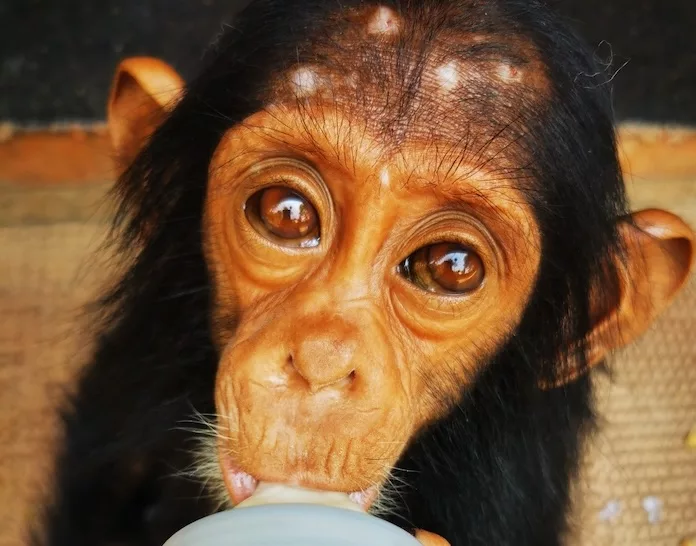At less than one-year-old, Sana’s future is already partly decided. The tiny female chimpanzee is a trafficking survivor who has irreversible injuries. Due to these impairments, she can’t have babies on her own in the wild, as she will need to deliver by C-section. As studies also show, early trauma can scar chimpanzeesthroughout their lives. So Sana may grapple with social and emotional issues due to losing her family as an infant.
In other words, Sana has been robbed of a great many things in her short time on Earth. At the sanctuary where she now resides — J.A.C.K Primate Sanctuary (Jeunes Animaux Confisqués au Katanga) in Democratic Republic of the Congo (DRC) — other young non-human primates have endured similar losses. They also have peers in sanctuaries elsewhere in Africa, with rates of great ape poaching, infant capture, and trafficking attempts, variously growing in several range states since 2020, according to investigative findings published earlier this year.
Chimpanzees, orangutans, gorillas, and bonobos, are all endangered or critically endangered. So the Earth’s dominant great ape — aka humans — needs to respond forcefully to the trafficking problem and other threats going forward.
The Convention on International Trade in Endangered Species of Wild Fauna and Flora (CITES) is holding a Standing Committee meeting between 6 and 10 November. At the event, Liberia is calling on the committee to back new proposals aimed at addressing the trafficking issue, offering some hope that action could be on the horizon.
To continue reading this story, please follow this link to my Substack newsletter, where I originally published this article.
Featured image of Sana, copyright of J.A.C.K Primate Sanctuary.

